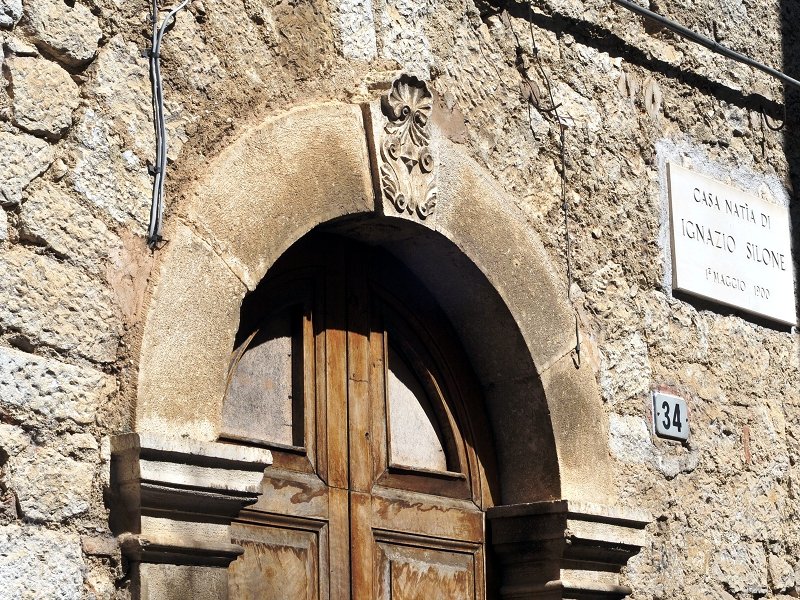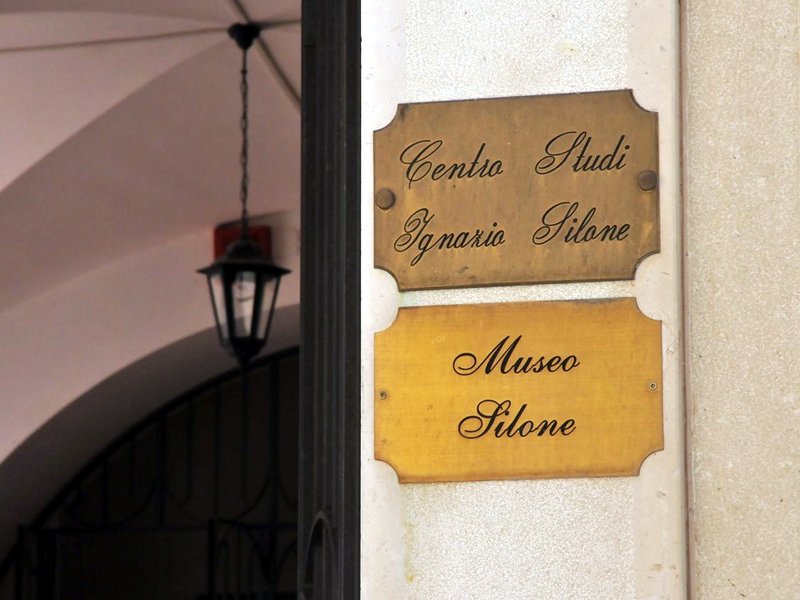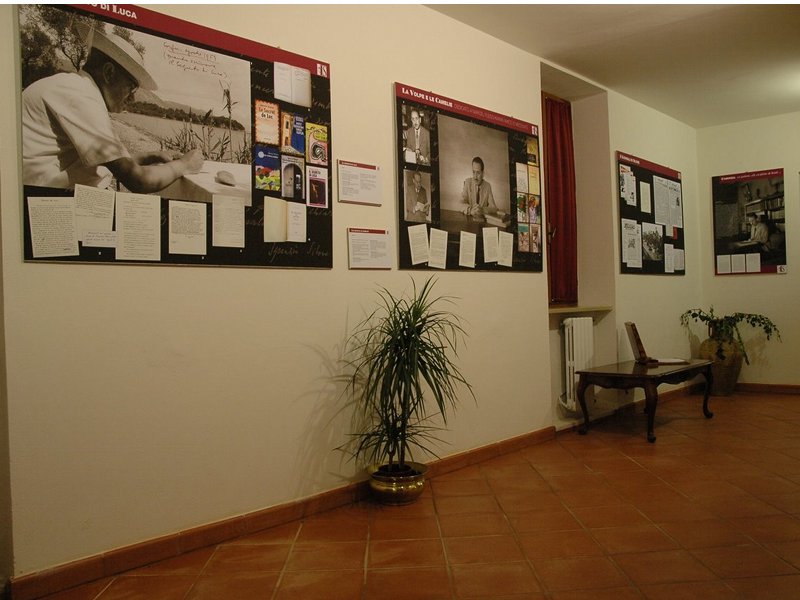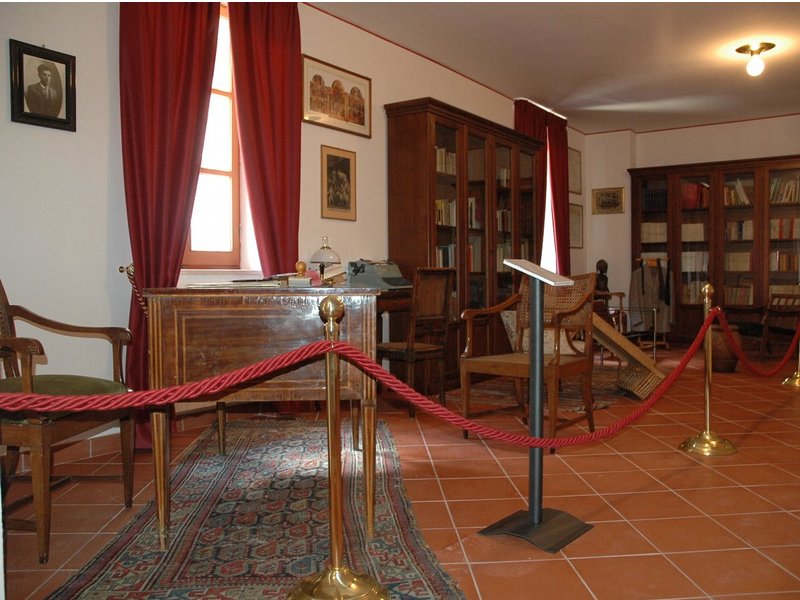Museum and Centro Studi Siloniano
Via del Carmine - 67057 Pescina (AQ)
The Centro Studi Siloniani and the Museum dedicated to the writer, in the Via del Carmine in Pescina, are situated within the former monastery of the Conventual Franciscans built in the time of Francis of Assisi. The monastery was abolished during the ten-year period of the military occupation and with the implementation of the so called "subversive laws". Then it was destined to other functions. It became city theater where also the bands competition of Pescina were held: this village became so famous in the big cities and abroad, that it was called "lioness of Italy".
After the earthquake occurred on the 13th of January 1915, the socialist "Lega dei Contadini" (Farmers' Union) organized its meetings in the courtyard of the former monastery. It is remarkable that the Union also had a picture representing Christ the Redeemer wrapped in a long gown with an inscription saying: "Beati gli assetati di giustizia" (meaning "Blessed are those who are thirsting for justice"), while below the picture there was the tomb of Lazarus, as Silone wrote in its book "Uscita di Sicurezza" (edited by Longanesi p. 43) and "Una Manciata Di More" (edited by Oscar Mondadori pp. 290-291). Silone, who was born near the monastery (see the picture on the left), often sneaked in those meetings (Uscita di Sicurezza, Longanesi p. 44). The farmers fought against the Prince Torlonia in order to possess the lands and cultivate them, and they also claimed the ancient right to fish in the former Fucino lake. For this purpose a newspaper entitled "La Vanga" (meaning "The Spade") was published. Ignazio Silone expressed the yearning for freedom of the farmers from Pescina in his first most famous novel entitled "Fontamara", revealing Fucino's problems (1930).
The former monastery in the 1930s and following, during fascism, became a jail. During World War II it was forsaken and reduced to a pitiful state.










